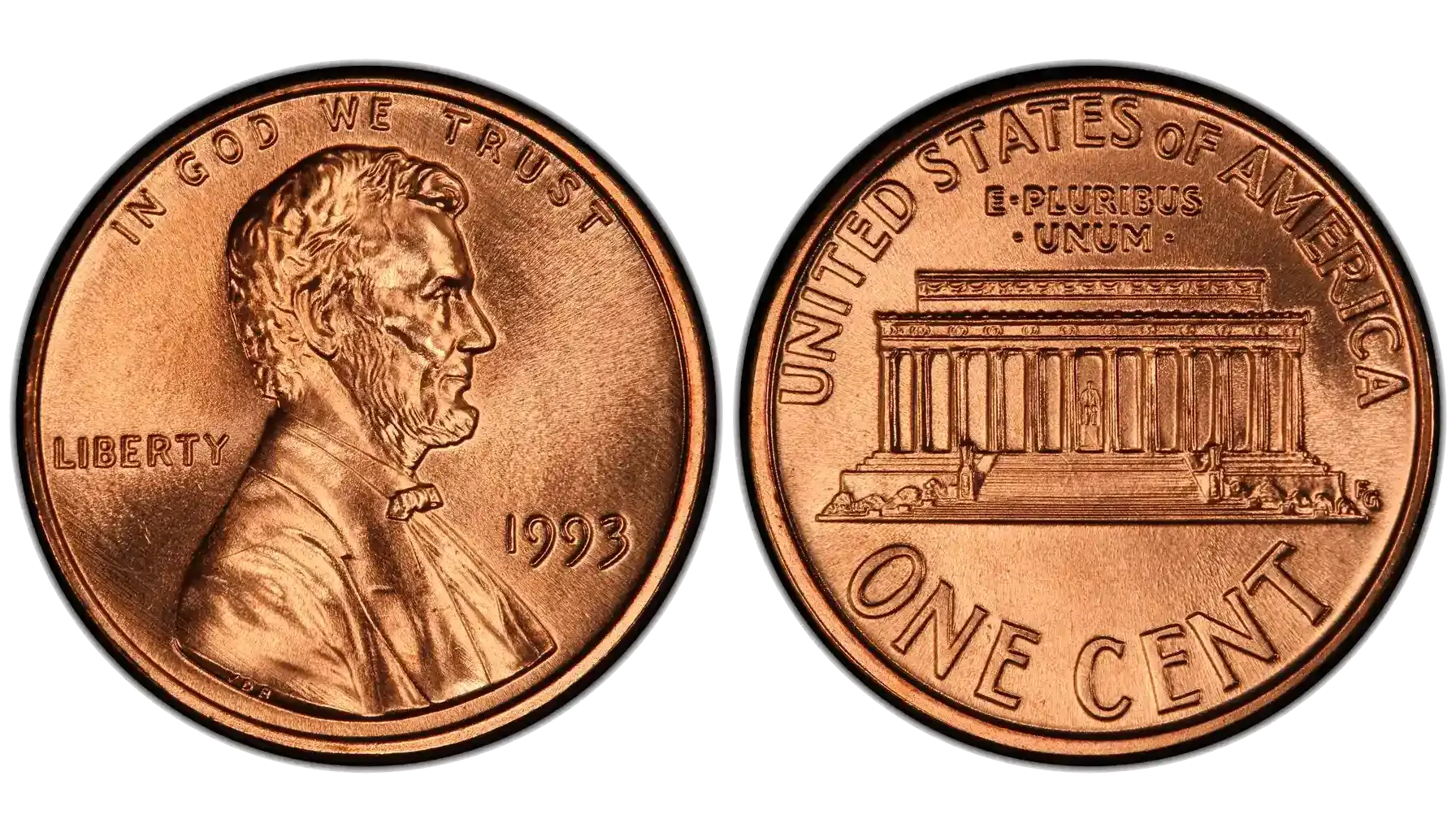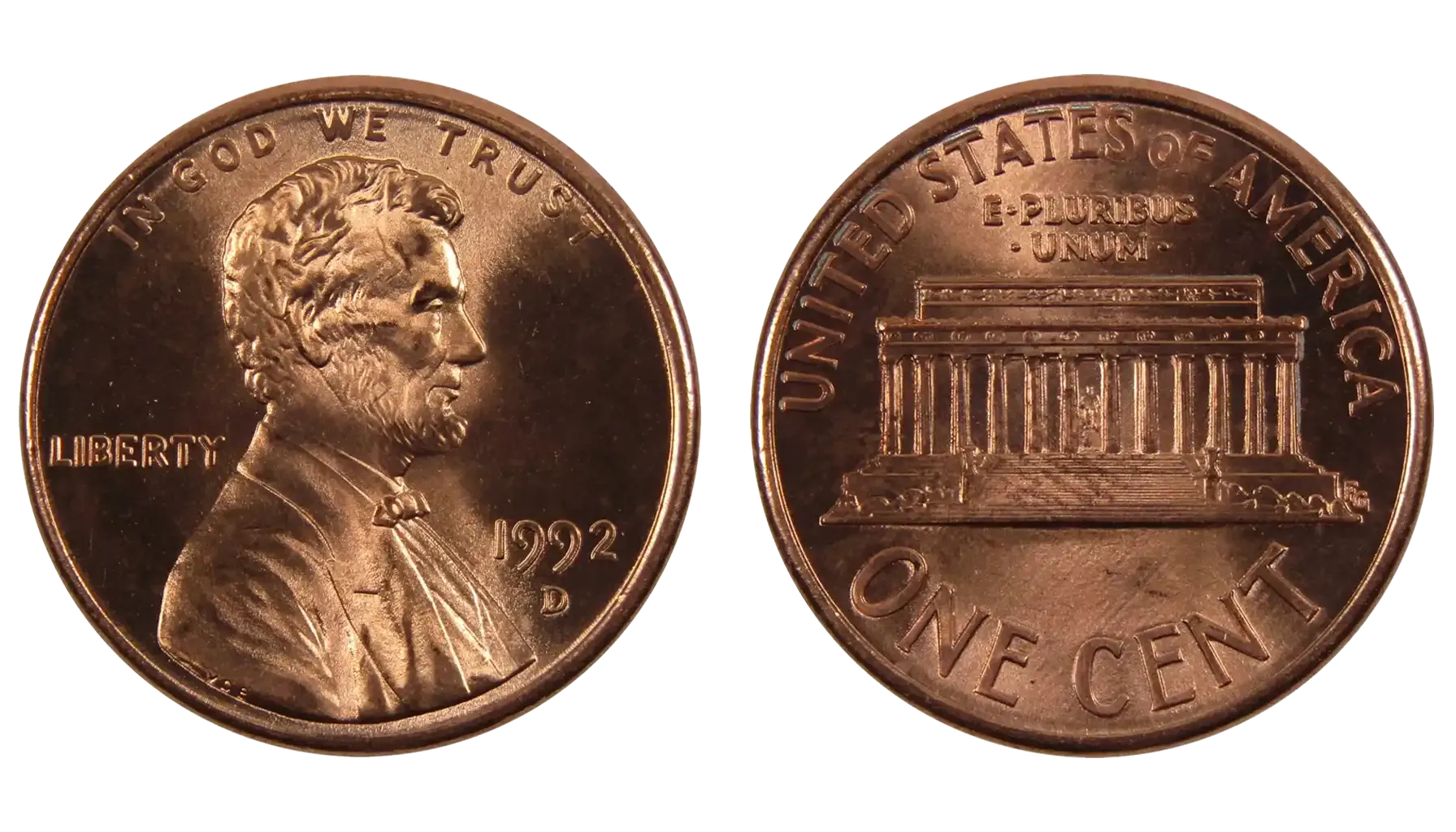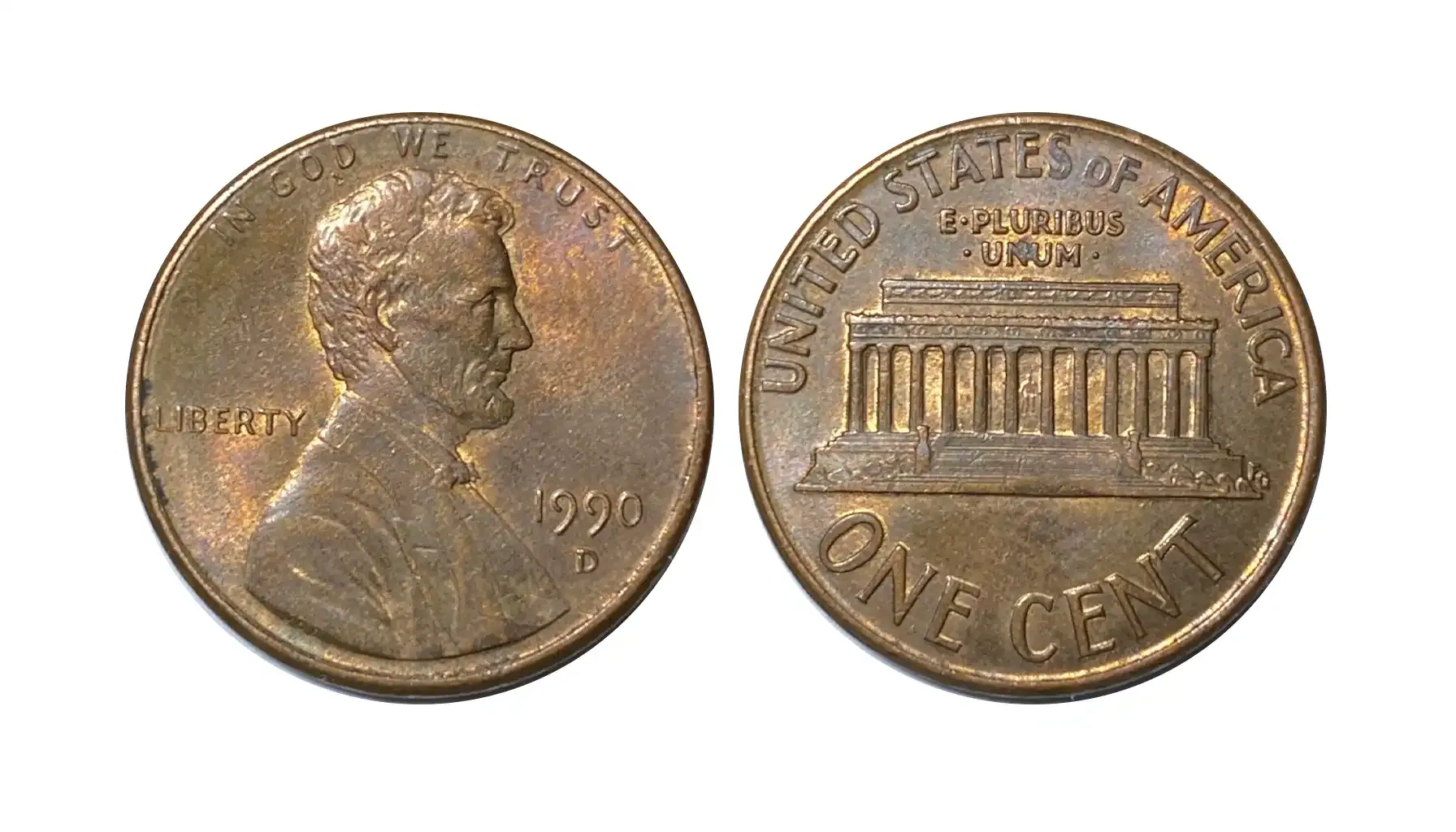Contents:
Jefferson nickels have long been considered one of the most iconic American coins ever minted, thanks to their distinctive design and history behind them. Each issue present on the market has a story to tell, dazzling with unique features and characteristics that make some instances rare. So, what about the 1949 nickel in particular?
The 1949 Jefferson nickel reveals the true worth of post-war coins, be it of financial or aesthetic interest. But how can you determine the true 1949 nickel value? Which steps to take so as to get through the process and check coin value smoothly? Let us see.
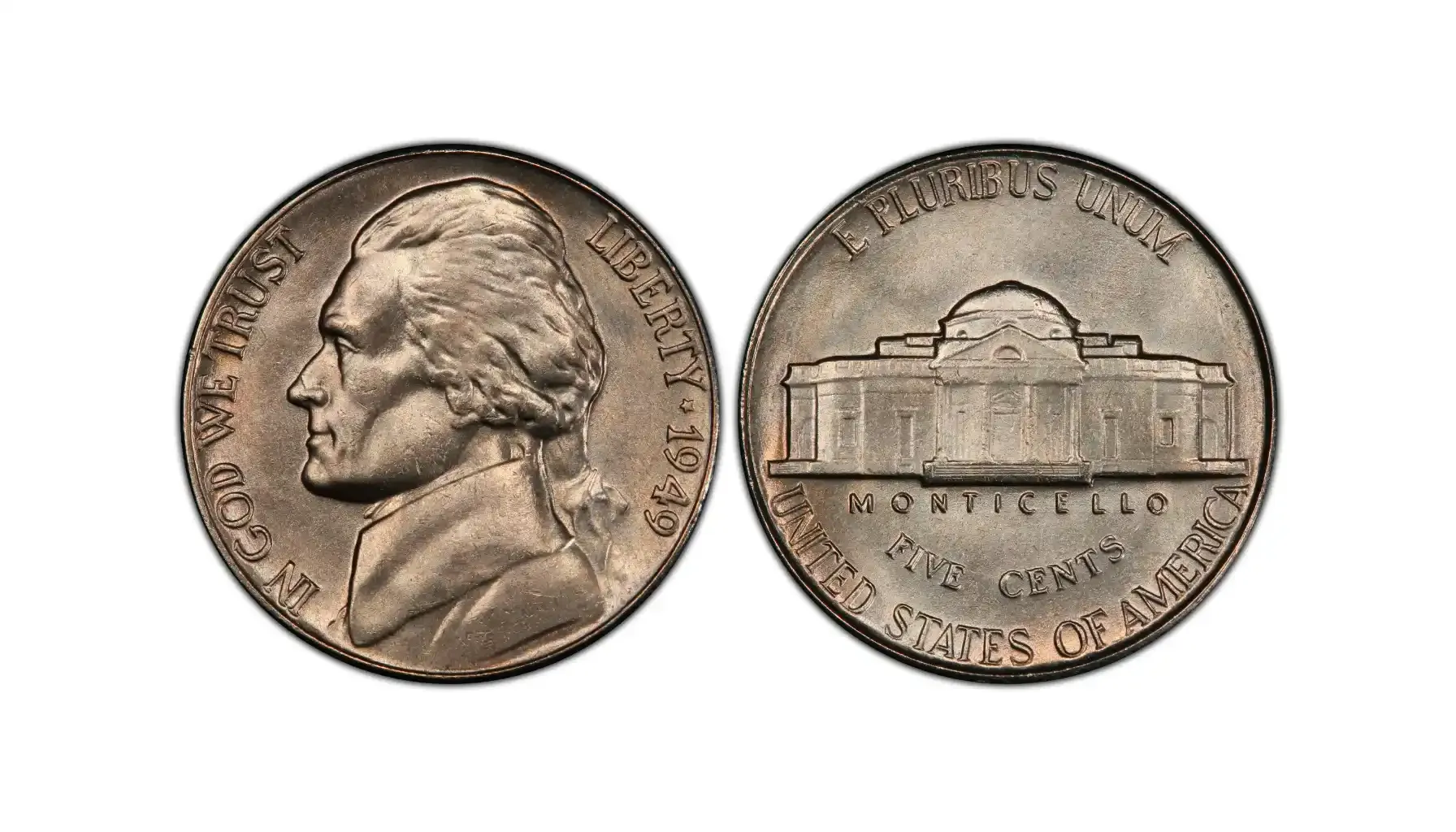
Step 1. Analyze the Key Characteristics of the 1949 Nickel
Firstly, it is vital to understand which features your coin may display. Since there exists a standard, each representative of the series should stick to the same patterns in terms of their appearance. This is what unites all the coins of the group:
Mint Marks
The 1949 US nickel was minted in three different locations: Philadelphia, Denver, and San Francisco respectively. Each facility puts an "emblem" (=a mint mark or lack thereof) that can greatly affect the coin’s value.
Philadelphia: 1949 Nickel No Mint Mark
Denver: 1949 D Nickel
San Francisco: 1949 S Nickel
Design Features
Both sides of the 1949 nickel may boast indicative patterns of the symbolic Jefferson nickel design. On the obverse, one may see a left-facing portrait of Thomas Jefferson, designed by Felix Schlag. The reverse, on its part, displays Jefferson's residence, Monticello, along with the inscriptions "MONTICELLO", "FIVE CENTS" and the year 1949.
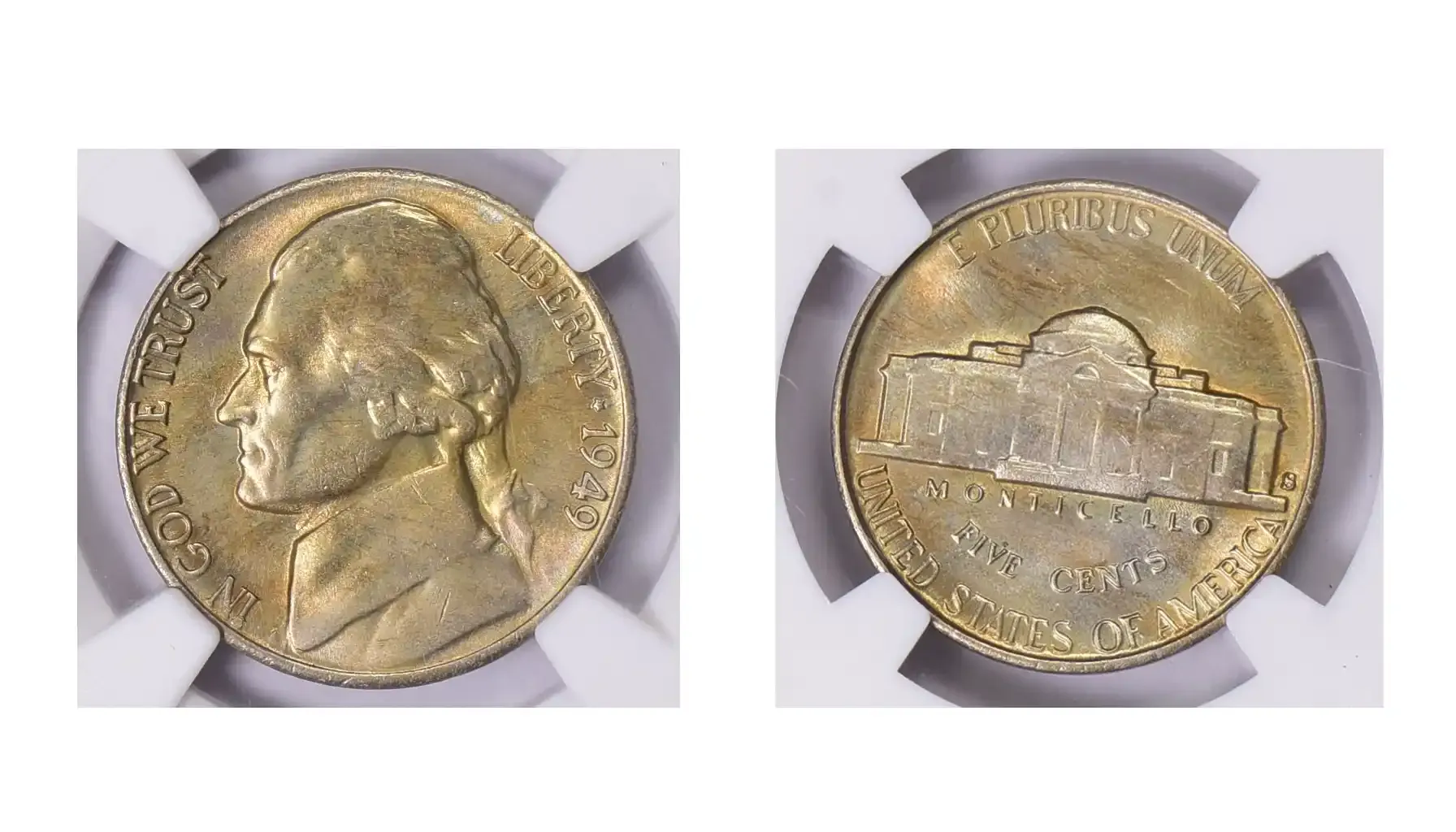
Composition
Like any other nickel of that time, e.g., 1948 nickels, the 1949 nickel was composed of 75% copper and 25% nickel. This is why these coins have their distinctive color and weight.
Size and Weight
Diameter: 21.21 mm (0.835 in)
Weight: 5.000 grams (0.176 ounces)
Edge
The 1949 nickel features a smooth, plain edge, which is standard for this denomination.
Step 2. Inspect the Condition
The condition, or grade (attributed by a professional grading service like PCGS or NGC) significantly boosts the value of a 1949 nickel. As such, coins may be graded on a scale from 1 to 70 (or from Poor to Uncirculated in this respect). Here is a quick overview of common grades (though there are many more to explore).
Grade | Description |
Poor (G) | Heavy wear, most details gone |
Fine (F) | Moderate wear, some details remain |
Very Fine (VF) | Slight wear, most details intact |
Extremely Fine (XF) | Light wear, nearly all details sharp |
Uncirculated/Mint State (MS) | No wear, mint luster intact |
How to Inspect the Condition?
Focus on High Points: Check the wear on Monticello's dome and Jefferson's hair.
Magnify Details: Examine Jefferson's face and the coin's fine details with the use of a loupe.
Look for scratches: Discoloration or scratches reduce the coin's quality without a doubt.
Check the Luster: Worn coins will look dull, whereas uncirculated instances are to demonstrate luster at their best.
Evaluate Overall Appearance: Coins with even wear and no significant damage will receive a higher grade in the end.
Step 3. Look for Errors and Variations
The presence of errors and different variations always mean different rates within the same series. As for mint locations that determine the rarity of the coin, each one mentioned above (i.e., Philadelphia, Denver, and San Francisco Mints) produced varying quantities of nickels, which is why certain instances are more sought-after. As for mintage figures, here they are:
Philadelphia: 60,652,000
Denver: 36,498,000
San Francisco: 9,716,000 (no proof coins minted, though)
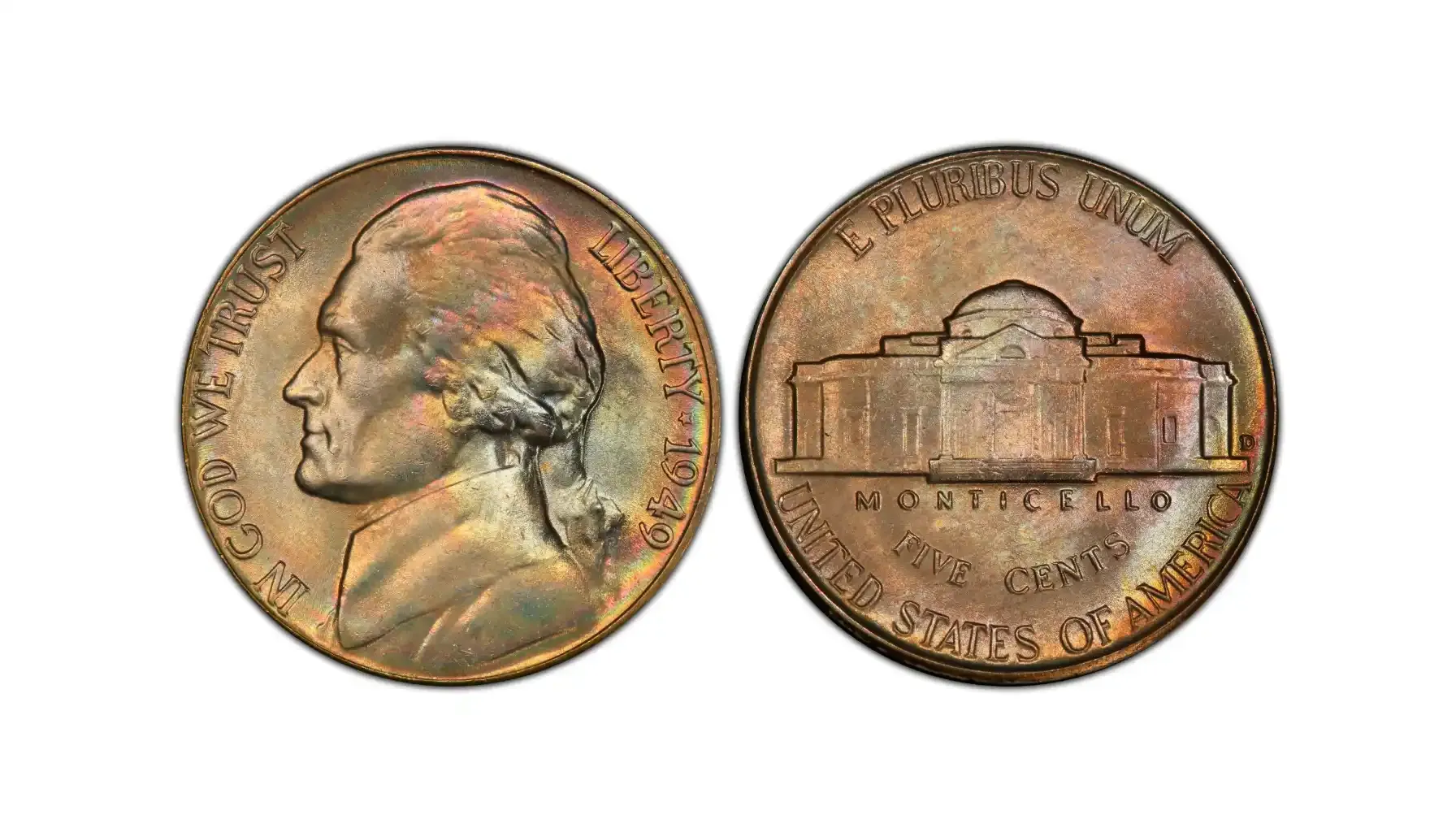
Mint errors can be different, too. However, some examples regularly enter the market and command higher prices than their usual versions. One such 1949 nickel error is the 1949-D/S nickel, which means that the San Francisco mint mark ("S") was overstruck onto a 1949 Denver mint mark ("D"). As a result, the "S" mint mark appears beneath the "D" on the coin's reverse side.
Step 4. Research Current Market Prices
How much is a 1949 nickel worth? As soon as you have assessed your 1949 nickel's condition, mint mark, and possible errors, it is high time you looked for the current market 1949 nickel worth. Here are some key pricing standards provided by PCGS as of February 2025.
Coin | Maximum Value |
1949 5C (Regular Strike) | Up to $3,650 |
1949 5C, FS (Full Steps) | Up to $30,300 |
1949-D 5C (Regular Strike) | Up to $1,300 |
1949-D 5C, FS (Full Steps) | Up to $9,000 |
1949-S 5C (Regular Strike) | Up to $1,500 |
1949-S 5C, FS (Full Steps) | Up to $15,000 |
*FS (Full Steps) refers to coins with a clear and complete strike on the steps of Monticello, which is rare and highly sought after by collectors.
Check Online Marketplaces and Auction Sites
eBay: If you want to find out the current price of 1949 nickels, eBay is an excellent resource. One may easily access previous auctions organized by individual collectors, so do not expect them to be top-notch.
Heritage Auctions: Another trustworthy resource for current selling prices is Heritage Auctions, which is famous for its premium coin auctions. The most recent auction results for 1949 nickels can be found by searching their archives quickly.
Other Coin Auction Houses: Rare coins, like 1949 nickels, are often up for auction on websites such as Stack's Bowers, GreatCollections, or Teletrade. You can see what collectors are ready to pay for coins (i.e., their current bids) and participate in this event, too.
Employ Numismatic Apps
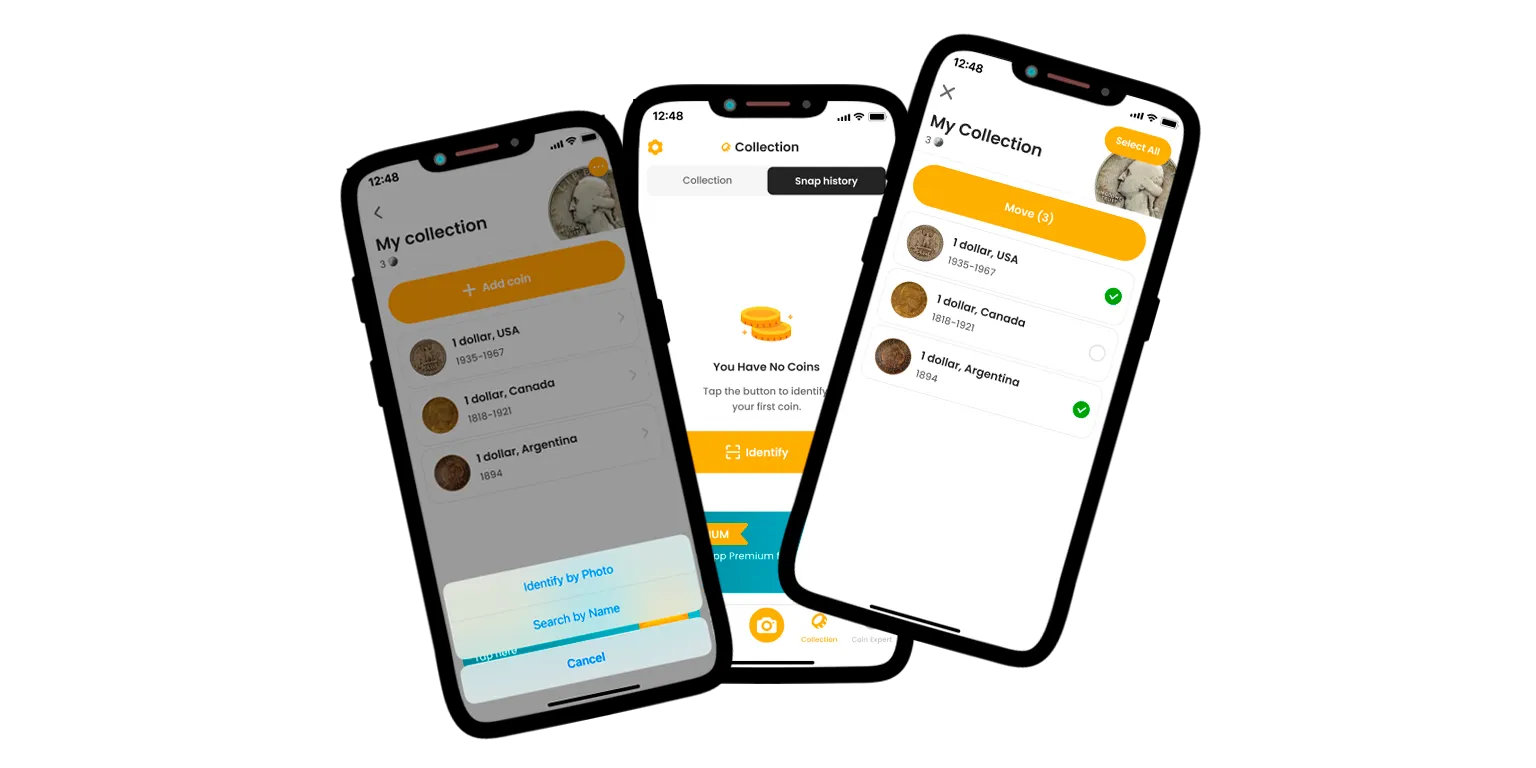
Do not hesitate to rely on the numismatic app. With the help of these, you can identify any coin by photo, estimate its value, and even track market trends in real time. We recommend that you try Coin ID Scanner, for it provides relevant information, offers numerous features (coin identification, collection management, market analysis, etc.), and connects users with the entire community of like-minded.
Do not forget to read about the 1943 Wartime Nickel.
Use Price Guides
Price guides, such as those from the Red Book (A Guide Book of United States Coins) or PCGS (Professional Coin Grading Service), may become a great resource of information regarding market trends based on the coin’s grade, mint mark, and other variables. These are only estimates, though, and demand may affect the real market price in the end.
Evaluation requires thorough preparation and deep analysis of several factors. However, keep in mind that prices may vary based on timing, demand, and the condition of your specific coin, which is why make your research relevant and up-to-date.

